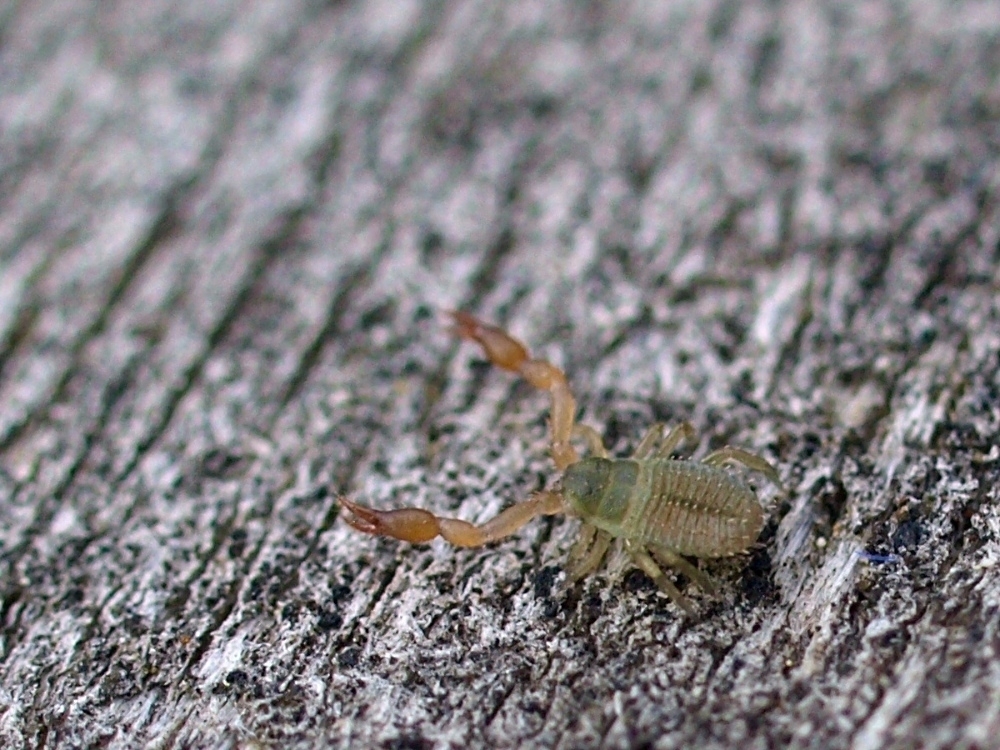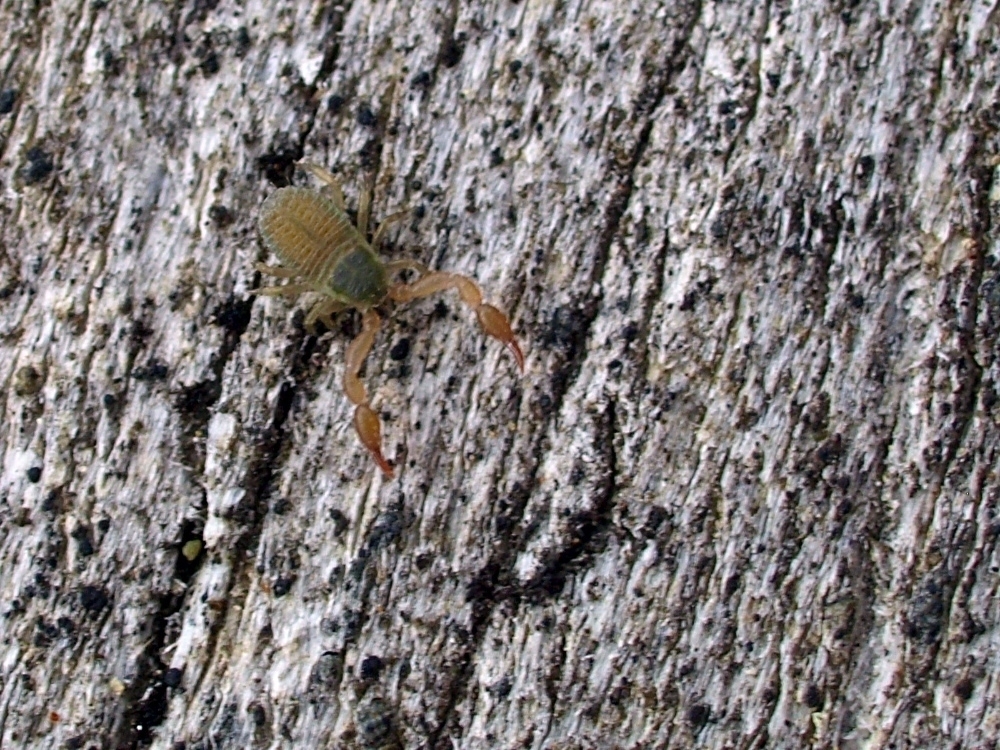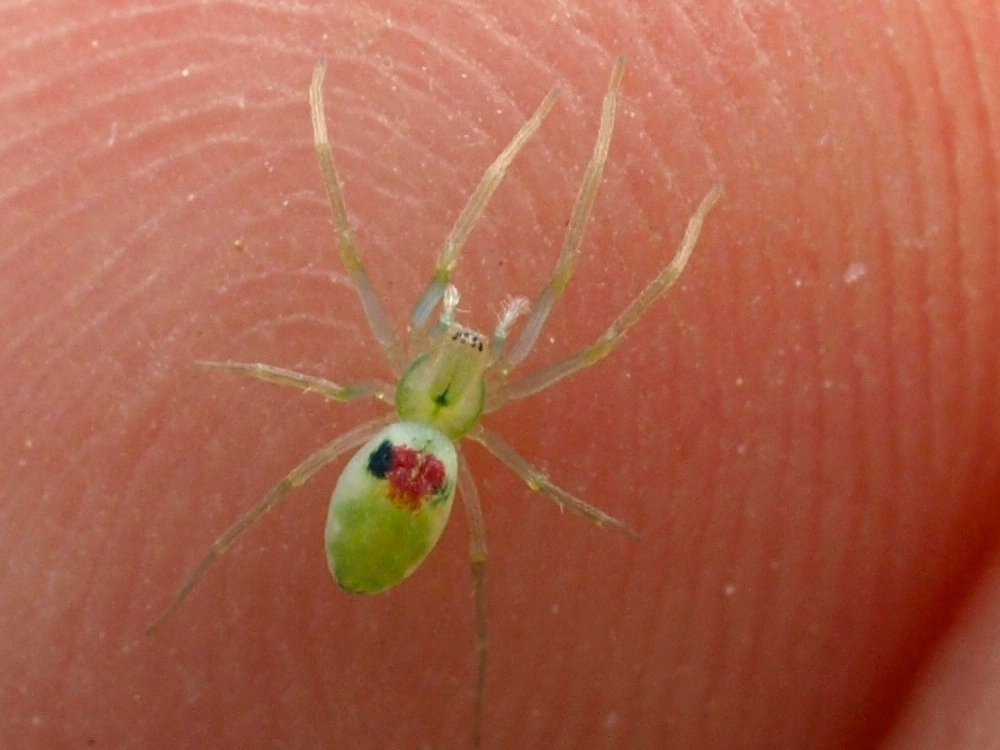I’m always a bit of a sucker for colourful animals of various kinds. It’s a failing. But not an uncommon human one.
Hacking away at our Bay tree the other day I came across two I hadn’t seen before: both visually quite colourful (as opposed to merely behaviourally colourful, like say a jumping spider).
The first was a tiny false scorpion: even smaller than the 5mm long and usually dark brown ones that I sometimes catch in our bathroom, this one was green with red pedipalps (their nippers). It had fallen onto my shirt and from there I was able to put it onto the deck railing for a shot or two:

Luckily it was so extremely slow moving. At about 3mm long it was at the limits of what I could capture with my current setup.

I suppose the colours would be good camouflage for an arboreal hunter. Apparently they wander about probing with their pedipalps for prey; and when they find it seize it and poison it before ripping it to bits and feeding themselves. Charming.
Not long afterwards I spotted a really quite pretty green spider running around on a branch. It proved hard to catch but I managed to get it into a plastic container and into the fridge overnight in the hope of slowing it down sufficiently for photography. (I have heard this is a common cheat amongst photographers of small beasts.)
The next day I spent five minutes trying to photograph it before it inevitably escaped:

As you can see, this spider too, is very small, its body probably no more than 5mm long. According to Forster & Forster, the main reference book I use when checking out what spider I’ve caught, this would appear to be a spider of the Paradictyna genus, “undoubtably one of our most handsome spiders”1.

Why yes, it is very handsome.
But also very sadly delicate, as I found out when it escaped from my hand and fell onto the sun-warmed barbecue, instantly dying.
I am not to be trusted with animals, it seems.
1 While looking for more information on these spiders I came across David Winter’s post on them, and from there, Ray Forster’s obituary. Forster was a guy so dedicated to his science that when he was stationed in the tropics in WW2 he built a still, not to to get boozed, but to have alcohol for preserving all the specimens he was catching!